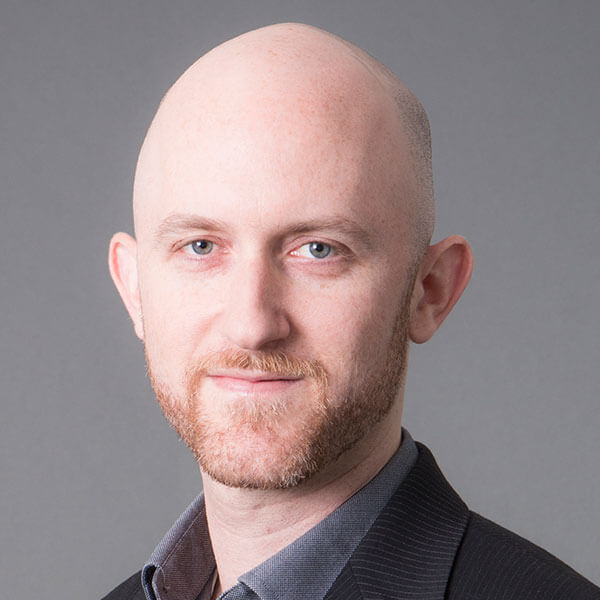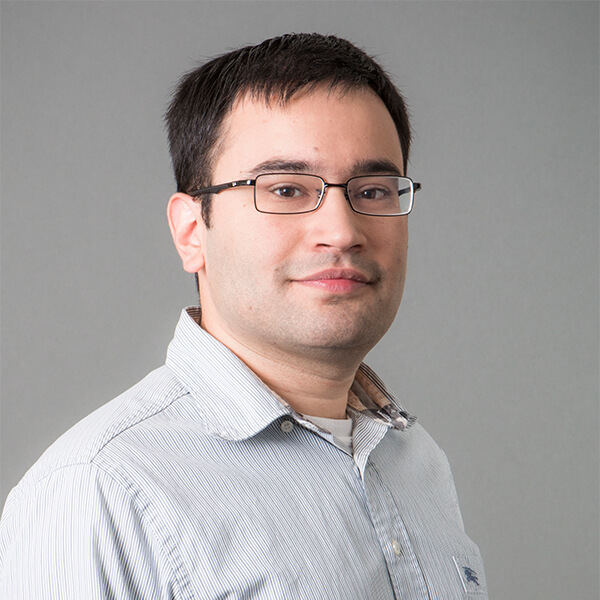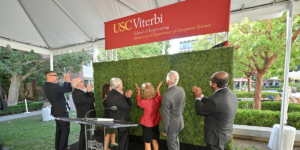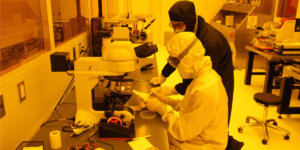The 2018 winners of the prestigious National Science Foundation CAREER Award are George Ban-Weiss, Assistant Professor in the Sonny Astani Department of Civil and Environmental Engineering; Xuehai Qian, Assistant Professor in the Ming Hsieh Department of Electrical Engineering and the Department of Computer Science; and Ashutosh Nayyar, an assistant professor in the Ming Hsieh Department of Electrical Engineering.
Ban-Weiss is an expert in air pollution, climate change, and urban planning, while Qian’s research focuses on computer architecture and systems for applications such as graph processing and machine learning. Nayyar studies large scale systems and decentralized decision-making.
The recipients of this highly competitive national award are early-career faculty members whose outstanding integration of research and education poises them for ongoing leadership in their respective fields.
George Ban-Weiss
“George is an extremely research-active young faculty member,” said Lucio Soibelman, chair of the Sonny Astani Department of Civil and Environmental Engineering.
“This award distinguishes him in three critical urban sustainability challenges he’s tackling: urban warming and extreme heat, air pollution, and water conservation, through advanced physiochemical modeling and measurement data-driven approaches.”

Professor Ban-Weiss wins NSF Career Grant for his innovation in climate change research. Photo / Michelle Henry
Ban-Weiss intends to take a broad approach to solving environmental issues. “My research looks at the intersection of several topics: global climate, urban climate, air pollution, water use, and land cover,” Ban-Weiss said.
Through the NSF CAREER grant, Ban-Weiss hopes to take a systems’ perspective to tackle these interlinked sustainability challenges.
Ban-Weiss completed his undergraduate studies in mechanical engineering at UC Berkeley, where he received his M.S. and Ph.D. Following his Ph.D., Ban-Weiss did postdoctoral research at the Carnegie Institution at Stanford University.
“[Carrying out research at the Carnegie Institution] was a really enriching experience. I was there for about two years and learned a lot. It definitely helped to shape the portfolio of research that I have now,” said Ban-Weiss.
That portfolio was further strengthened and diversified when Ban-Weiss landed a post-doctoral position working at the Lawrence Berkeley National Lab, which later led to a scientist position.
“Most of my research at Lawrence Berkeley Lab was related to urban heat islands and air pollution-climate change interactions,” said Ban-Weiss.
Ban-Weiss continued to innovate in his research, eventually earning his position as an assistant professor at USC Viterbi. Here, he has brought together often isolated disciplines from his past into a cohesive research program.
One innovative method of raising awareness he has proposed involves music. Last year, Ban-Weiss, an accomplished bassist, debuted “Lost City: Songs from a Changing Sea” (now called “Black Inscription”) at a USC Vision and Voices concert.
“My musical life is embedded within this NSF CAREER grant,” he said. “I wanted to bring together the science and music sides of my life and apply that intersection to education and outreach in a different way.”
His proposal involves musical performances that explore the environment through song. His bandmates specialize in songwriting, so Ban-Weiss trusted them to produce lyrically compelling songs to move audiences either unfamiliar with or uninspired to take the steps to help improve the environment.
“[The music] is a way to attempt to reach people on a different level and inspire change,” he said.
Xeuhai Qian
Xuehai Qian received an NSF grant for his work with graph processing.
“Graph analytics have emerged as an important way to understand relationships between various heterogeneous types of data, allowing data analysts to draw valuable insights from the patterns in data for a wide range of applications,” Qian said. “Our goal is to design efficient graph processing systems and architecture considering the interfaces between multiple system layers.”
Born in Beijing, Qian was always interested in computer science and electrical engineering.

Qian was interested in computer science from early on in his life. Photo / Michelle Henry
“I was influenced by my parents’ conversations at an early age,” said Qian whose parents taught computer science in China. Those familial conversations had a deep influence on Qian to pursue research in the field. “I felt that I made the right choice because in our information age, computer science has applications in many domains,” he said.
Qian’s current research is related to computer systems and architecture, merging both computer science and electrical engineering.
“I study the novel architecture to accelerate machine learning and graph processing,” Qian said. He often sees a crossover between his work as a professor and his research.
“Sometimes I discuss recent research in my class so that the students can see how the concepts learned in class can be relevant to the cutting-edge research projects,” Qian said. “In EE 559, Principles of Parallelism and Concurrency [a new course he developed] I spent one lecture explaining our recent research papers on graph processing system.”
One aspect of his research that involves novel algorithm-centric high-performance graph processing excited the National Science Foundation to award Qian the grant.
“The research takes a vertical approach to the collaborative designs of algorithms, programming model, systems, and architecture,” Qian explained. “We’re tackling challenges brought on by advances in artificial intelligence, for example, by focusing on the interactions across multiple system stacks.”
In terms of innovation, Qian’s work engages a diverse body of research in theory, systems, and architecture. In a time when hardware is struggling to keep up with the demands of software, their joint collaborations aim to influence the production of high-performance, energy-efficient machines.
Ashutosh Nayyar
Ashutosh Nayyar had an early penchant for mathematics and education. As an undergraduate, he attended the Indian Institute of Technology before moving to the U.S. to attend the University of Michigan for graduate school.
Following post-doctoral research at the University of Illinois at Urbana-Champaign and at the University of California, Berkeley, Nayyar was looking into ways he could combine his passions for electrical engineering and city life: He chose USC.
“It was a good environment in terms of research and junior faculty support,” Nayyar said.

Nayyar works on decision-making for large-scale decentralized systems. Photo / Michelle Henry
His research is on large scale systems, particularly on devising mathematical techniques to make optimal decisions for decentralized systems.
One of the biggest challenges in Nayyar’s work is the scale of the problem.
“When you go to large systems, you have many interacting and communicating controllers with different information and that makes such decentralized problems intractable,” he said.
With his NSF grant, Nayyar hopes to be able to systematically analyze the effect of communication limitations and the performance of such large scale decentralized systems.
He also hopes to interact with high school students, connecting them to mathematics and engineering research through outreach programs.
Published on April 17th, 2018
Last updated on May 16th, 2024













